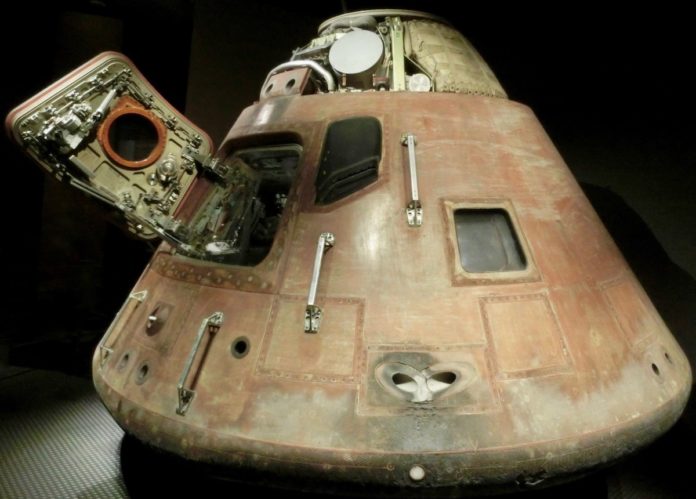Last week I drove my ’57 Chevy to the history museum in town. I secured my mask, and then my fingers got a mind of their own, pecking furiously on my laptop. While I wrote under the heritage oak tree, I imagined standing with a bullhorn in my flatbed preaching to you about all that’s wrong with how history is taught in our public schools. Maybe you read my rant. The reader reaction I received? Crickets. Understandably.
So let’s talk solutions.
THE NEW AMERICAN HISTORY EXPERIENCE: Replaces U.S. History textbooks and reading comprehension testing
The new American history curriculum is skill-based and hands-on. Students will achieve an advanced level of comprehension and articulation of American History. The first two weeks are spent acquiring the skills necessary to access U.S. History online and complete the traditional academic requirement. The remaining months, students will be making a personal connection with history.
Skill Objectives: (1) interviewing techniques, (2) storytelling through historical narrative, digital story production, and (3) advanced search techniques to access history archives and online digital resources. Students must demonstrate skill competency by successfully completing each history module.
MODULE 1 Skill Check: Demonstrate the skill of searching online and locating resources in person at various locations (museums, libraries, visitor centers, etc.)
Our history museum is open on Thursday evenings to take advantage of the Farmers Market crowd. They come to use the public restroom and suddenly realize they are surrounded by museum artifacts. As the restroom line grows longer, their curiosity peaks, and they start asking questions. The museum docent facilitates the learning experience. Our guests will often purchase one or more of my regional history books.
When I visit a state or national park for the first time, I stop at the Visitors Center. Audiovisual presentation, displays, and park docents help guide my interaction with site history.
I recall a brilliant engineer at work telling me he refers to illustrated books written for children to help understand complex concepts. Thick textbook coverage of nearly 250 years of United States history serves no useful purpose. The “history material” committed to memory for a test is soon forgotten. Why burden students with an antiquated learning process that fails to excite their naturally curious minds?
MODULE 2 Skill Check: Conduct a field study at a local historical site.
The Honda Motor Co. founder, Soichiro Honda, created a competitive advantage in the market for his automobiles, motorcycles, generators, and jet planes. He believed in “going to the place” (visiting the site) of the problem to solve it. Hands-on experience and skill-based learning are key factors for success in business, education, sports, sciences, and the arts.
The student of history becomes a curiosity hound, always sniffing for clues and asking questions like Huell Howser during his California’s Gold series. Skill-based history lessons will include how to ask questions that drill down to get to the heart of understanding the place and time in history.
Exploring places near and far from home can bring richness and meaning to your life. Try this for yourself: watch the 1932 movie “The Music Box,” then climb the historic staircase where Laurel and Hardy tried to deliver a piano – you will be transported back in time.
The study of history is a dynamic process of interpreting historical facts. I have discovered that the best way to understand our past is to visit the site where an event took place. The buildings and people may be gone, but the ground remains constant with a story that will never be forgotten. Wounded Knee is such a place for me.
MODULE 3 Skill Check: Demonstrate competency using skills from Modules 1 & 2 to produce a digital story about history.
Students will attend a Digital Storytelling Workshop. Go to storycenter.org to view some of the completed projects using digital storytelling skills acquired by workshop participants.
Students who complete all three modules will become subject matter experts, and by telling their stories, they will share their knowledge with their peers and future generations.
My background in history and skills-based training
For nine years, I managed a team of trainers at the national call center for Honda and Acura automobiles in Torrance, California. I am the former museum curator and vice-chair of education for the South Pasadena Preservation Foundation (SPPF). I received a B.A. in Behavioral Science with a minor in Future Studies. I wrote four history books and have an extensive private history collection of images and artifacts from the San Gabriel Valley.
Sadly, people tell me they hate learning about history. But I know what they are saying. They dislike being forced to memorize dates and facts about events that have little or no connection to their lives today. Classroom lectures, reading a thick textbook, discussions on Zoom; learning about history is not the problem – we have a “delivery system” problem. The course curriculum for history needs to demonstrate relevance. Otherwise, students will forget what they memorized the second they exit the bubble of formal education.
A final word
We’ve gone from flying a kite to a motorized “flying machine” to spaceflight in less than a century. Now we hold mini-computers – mobile phones – in the palm of our hands with more processing power than the onboard computer of the Apollo mission to the moon.
Like I’ve said before in this series, we are all travelers at birth aboard spaceship Earth. The future of our planetary spacecraft is in our hands. We must monitor our life-support systems and repair our thinking to maintain a healthy home on its trek in the universe. That is what the study of history can do for us.















.png)







